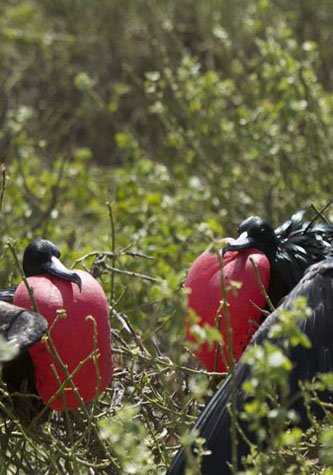When coming to the Galapagos Islands we picture tortoises and boobies, but very few visitors anticipate the fact that these are active volcanoes, and that we do our landings on young lava fields and we snorkel along rims of submerged calderas. The islands, as much as their creatures, are proof of an ever changing world, evolution of the living and of the inert.
Today we were, literally, inside a volcano. Long ago, we don’t know when – as mechanical events cannot be accurately dated, a big portion of Genovesa collapsed in the sea. Waves and currents eroded the more exposed walls and a narrow channel formed. The sea entered and colonized the floors of a once dry mass, now a bay. Sharks, rays, all sorts of fish, swam into the caldera. The sea reconquered land, a continuous story of uplifting and subsidence, the story of continents and ocean, of life and change on the face of our planet.
In the heart of the volcano, we anchored. On its beaches and cliffs, we walked. We enjoyed the company of its creatures, from red-footed boobies to spotted eagle rays. Genovesa is isolated enough from the rest of the islands that it has unique characteristics. There are no Galapagos hawks, so the owl took its niche of a diurnal hunter. We spotted short-eared owls in the day time. Marine iguanas here are the smallest of the subspecies of the archipelago. Cactus are non-prickly, prickly pears.
So today, without climbing thousands of feet, we were inside a volcano and had the opportunity to be delighted by its intriguing inhabitants.









